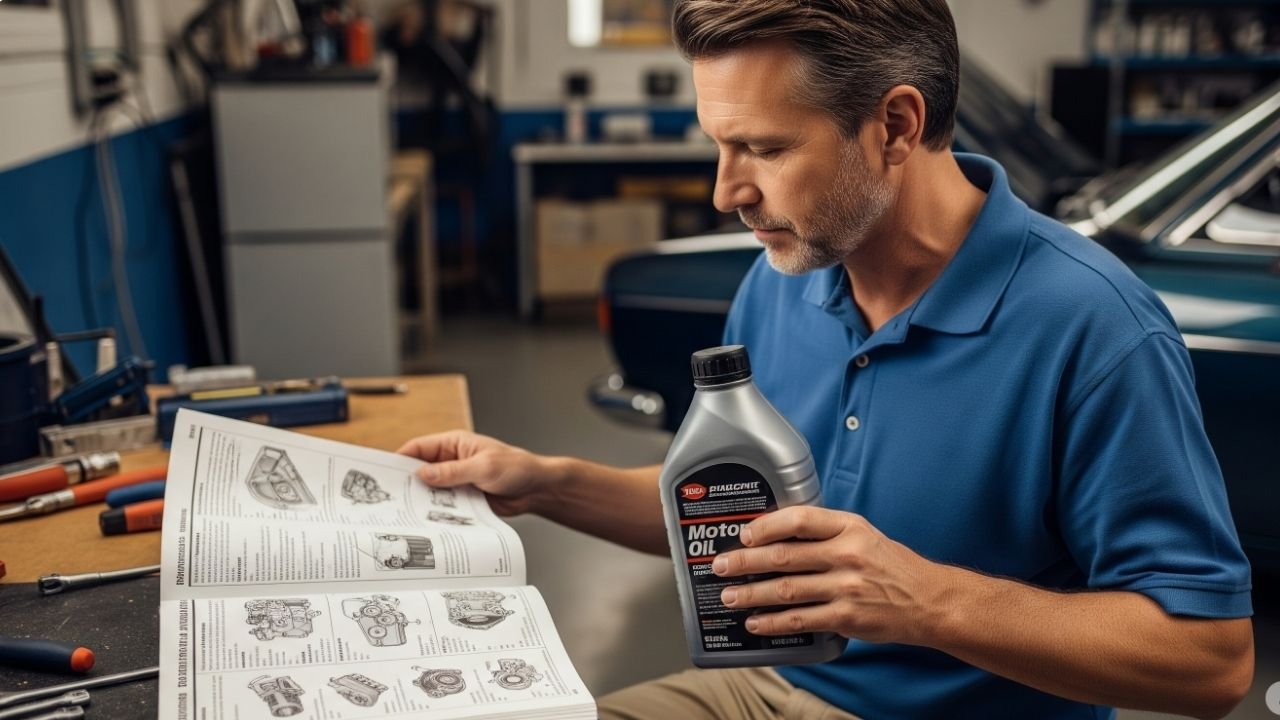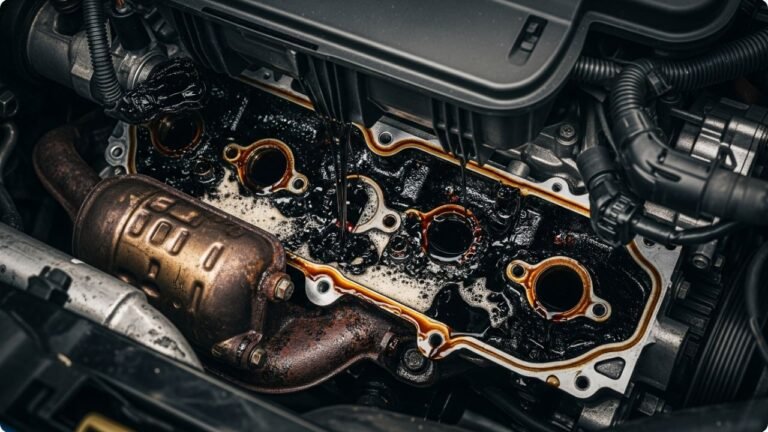What Oil to Use for My Car: A Friendly Guide

Have you ever stared at the rows of shiny bottles in the oil aisle and thought, “What oil to use for my car?” You’re not alone. For many car owners, choosing the right oil feels like solving a riddle with confusing labels, numbers, and jargon. But trust me, it’s not as complicated as it seems.
Think of engine oil like blood for your car. It keeps everything running smoothly, reduces heat, and prevents parts from grinding down. Using the wrong oil is like feeding a baby spicy food—not just uncomfortable, but harmful.
In this article, we’ll break down everything you need to know, from oil types and viscosity ratings to seasonal changes, driving habits, and more. I’ll also share a few personal stories and simple metaphors to help you connect the dots. So grab a cup of coffee, sit back, and let’s get your car running like a dream.
Understanding Engine Oil: The Basics Made Simple
Before answering what oil to use for my car, let’s decode what engine oil really does. It:
- Lubricates the moving parts of your engine
- Reduces heat and friction
- Cleans out debris and sludge
- Prevents rust and corrosion
- Improves fuel efficiency
In short, it’s the unsung hero of your engine. And like any hero, it needs the right cape—meaning the right type and grade of oil.
There are three main kinds of engine oil:
| Oil Type | Description | Best For |
|---|---|---|
| Conventional | Basic mineral oil refined from crude oil | Older cars or budget users |
| Synthetic | Chemically engineered for purity and performance | High-performance or modern engines |
| Synthetic Blend | A mix of synthetic and conventional | Drivers who want performance and affordability |
I personally switched to full synthetic oil last year, and wow—my car runs quieter, starts smoother, and even the mileage improved slightly.
What Do The Numbers Mean? (5W-30, 10W-40, etc.)
Ah, the numbers! “5W-30” or “10W-40” might seem like a secret code, but they’re actually pretty straightforward.
Here’s the breakdown:
- The first number (before the W) tells you how the oil performs in cold weather. The lower the number, the better it flows in winter.
- The “W” stands for Winter.
- The second number tells you how the oil performs at high temperatures.
So 5W-30 flows better in winter than 10W-30, but both behave the same at normal engine temperature. If you live in a cold climate like Chicago or somewhere hot like Arizona, these numbers matter a lot.
Pro tip: Always check your owner’s manual first. It usually recommends a specific viscosity based on your engine type
Matching Oil to Your Driving Style and Climate
Believe it or not, how and where you drive changes the answer to what oil to use for my car. Let’s break it down:
1. For Stop-and-Go City Driving:
If you’re often stuck in traffic or doing short commutes, your engine barely gets warm. That builds up sludge. A full synthetic oil helps reduce buildup and offers better protection.
2. For Long-Distance Highway Cruising:
Engines run hotter and longer, so an oil with strong heat resistance like 10W-40 synthetic blend is often better.
3. For Cold Winters:
Go with low “W” viscosity—like 0W-30 or 5W-30—so the oil flows easily when you start the engine.
4. For Hot Summers:
Thicker oils like 10W-40 or 20W-50 provide better film strength in scorching heat.
I once ignored this advice on a road trip through Nevada, using a thin oil meant for cold weather—and my engine temperature almost redlined. Lesson learned.
Conventional vs Synthetic: Which One Is Right for You?
You might wonder: “Do I really need synthetic oil? Isn’t conventional enough?”
Well, it depends on your car and your budget.
Conventional Oil:
- Cheaper
- Works fine for older engines
- Needs more frequent changes
Synthetic Oil:
- Lasts longer (up to 10,000 miles)
- Resists breakdown under heat and pressure
- Improves fuel economy
- Cleans sludge better
If your car is less than 10 years old, I’d strongly recommend going synthetic. I made the switch when I got my Toyota Corolla, and the difference was clear—especially during engine startups in winter.
Signs You’re Using the Wrong Oil
Still unsure about what oil to use for my car? Watch for these warning signs:
- Engine is louder than usual
- Oil light turns on
- Exhaust smoke becomes thicker
- You notice sluggish acceleration
- Oil gets dirty too fast
I once used the wrong viscosity (10W-40 instead of 5W-30) in my Honda Civic. It ran okay, but fuel consumption spiked and the idle felt rough. Switching back solved everything. Your car speaks—you just have to listen.
The Role of High-Mileage Oil
If your car has more than 75,000 miles, it’s time to think about high-mileage oil. This type contains special additives to:
- Condition aging seals
- Reduce oil leaks
- Minimize burning oil
- Extend engine life
When my uncle’s 2002 Camry started losing oil mysteriously, a mechanic suggested high-mileage oil. Within a few weeks, the oil loss dropped, and performance improved. It’s not a cure-all, but it sure helps older engines.
Oil Change Intervals: How Often Should You Change?
Another common question besides what oil to use for my car is how often to change it. Here’s a simple breakdown:
| Oil Type | Typical Change Interval |
|---|---|
| Conventional | Every 3,000 – 5,000 miles |
| Synthetic Blend | Every 5,000 – 7,500 miles |
| Full Synthetic | Every 7,500 – 10,000 miles |
But again, check your owner’s manual. Newer cars have oil life monitoring systems too. I once stretched synthetic oil to 11,000 miles because I mostly did highway driving—and the engine was still smooth. But that’s an exception, not the rule.
Quick Checklist: How to Choose the Right Oil
Still wondering what to buy next time? Here’s a quick decision-making list:
- ✅ Check your owner’s manual
- ✅ Consider your climate
- ✅ Think about your driving habits
- ✅ Know your mileage
- ✅ Choose the right viscosity
- ✅ Pick conventional or synthetic based on budget and performance
- ✅ Don’t forget the oil filter!
You’d be surprised how many people change their oil but leave the old filter on. That’s like drinking clean water from a dirty cup!
Why Choosing the Right Oil Matters
- Your engine depends on oil to stay cool, clean, and efficient
- Viscosity matters—know your numbers (like 5W-30)
- Synthetic oil offers better protection and lasts longer
- Match oil to driving conditions, climate, and engine age
- High-mileage oils are great for older engines
- Always consult your owner’s manual first
- The right oil boosts performance, fuel efficiency, and engine life
What Oil to Use for Different Car Brands: Manufacturer Recommendations Matter
Each car brand designs engines differently, and that changes what oil you should use. Here’s a handy table showing common manufacturer preferences:
| Car Brand | Recommended Oil Type | Popular Viscosity |
|---|---|---|
| Toyota | Full Synthetic or Blend | 0W-20 or 5W-30 |
| Honda | Synthetic for newer models | 0W-20 or 5W-30 |
| Ford | Depends on model | 5W-20 or 5W-30 |
| BMW | Full Synthetic (LL-01 spec) | 5W-30 or 0W-40 |
| Chevrolet | Synthetic Blend or Full | 5W-30 |
| Nissan | Conventional or Synthetic | 5W-30 or 10W-30 |
| Hyundai/Kia | Synthetic preferred | 5W-20 or 5W-30 |
| Mercedes-Benz | Synthetic only | 0W-40 or 5W-40 |
A close friend of mine owns a BMW 3 Series. He once put regular 10W-30 conventional oil in it during a road trip emergency. The car ran, but after a few weeks, performance dropped, and the fuel economy dipped. As soon as he switched back to the manufacturer-recommended synthetic oil, the smoothness returned.
Tip: Always use the oil specification mentioned by the manufacturer—especially for European cars, which often require ACEA or LL-01 standards.
How to Read an Oil Bottle Label: Decoding the Details
When you’re trying to choose what oil to use for my car, standing in front of dozens of bottles can feel overwhelming. Here’s how to make sense of what you see:
Look for These Key Terms:
- Viscosity Grade (e.g., 5W-30) – This is the most important number.
- API Certification – Look for the API donut symbol. It means the oil meets industry standards.
- SN, SP, or SM Ratings – These show the oil is approved for modern engines.
- Dexos1™ or LL-01 – Brand-specific certifications for GM or BMW, respectively.
- Synthetic / Synthetic Blend / Conventional – Always visible on the label.
- Mileage Range – High-mileage oils will be labeled as such.
The label also includes additives like detergents and anti-wear agents, though these are usually hidden in technical specs. Just stick to the brand and viscosity your car needs.
Seasonal Tips: Adjusting Oil to Weather Changes
Just like we switch clothes with the seasons, your engine oil may need a change too. Here’s how the weather affects oil performance:
Winter Driving (Cold Starts and Snowy Roads):
- Go with thinner oil like 0W-20 or 5W-30
- Helps your engine start faster in freezing temps
- Reduces wear during cold startups
Summer Driving (Hot Climates and Long Trips):
- Use thicker oil like 10W-40 or 20W-50
- Offers better protection in extreme heat
- Reduces oil burn-off on long highway drives
I live in a region where winter dips below freezing and summer soars to 100°F. I keep two types of oil handy and switch based on the season. It’s like giving your engine a winter coat or summer t-shirt—it breathes better and stays cool.
Top 5 Synthetic Oil Brands Worth Trying
If you’ve decided to go synthetic (good choice!), here are some trusted brands that car lovers swear by:
- Mobil 1 Extended Performance
- Protects for up to 15,000 miles
- Great for modern engines
- Castrol EDGE
- Titanium technology adds extra wear protection
- Valvoline Advanced Full Synthetic
- Excellent for high-mileage engines
- Pennzoil Platinum
- Made from natural gas, not crude oil
- Royal Purple
- Premium performance with racing-level protection
Remember: It’s not always about the brand. Stick to the specifications and viscosity your car needs. Even affordable synthetic oils will outperform top-tier conventional ones.
FAQs
Q1. Can I switch from conventional to synthetic oil?
Yes, you can switch any time. Just make sure to use the correct viscosity. Many drivers switch to synthetic gradually, starting with a blend.
Q2. What happens if I use the wrong oil?
The engine might run louder, use more fuel, or wear out faster. It’s not always instant damage, but long-term performance suffers.
Q3. How do I know if my oil is too old?
If it’s dark, gritty, or smells burnt—it’s time to change. Also, check the dipstick for level and texture.
Q4. Is synthetic oil worth the extra cost?
Absolutely. It lasts longer, protects better, and often saves money over time by extending engine life and oil change intervals.
Q5. Should I use different oil if I drive a turbocharged engine?
Yes, turbo engines run hotter. Use full synthetic oils with high heat resistance like 0W-40 or 5W-40 that meet turbo-specific standards.
Q6. Can I mix different brands or types of oil?
It’s not ideal, but in emergencies, mixing won’t hurt short-term. Try to stick to the same type (e.g., synthetic with synthetic), and get a proper oil change soon after.
Q7. What’s the difference between diesel and gasoline engine oil?
Diesel engine oils have different additives for soot control and wear protection. Never use diesel oil in a gasoline car unless it’s specifically rated for both.
Q8. Is it okay to top off my oil without doing a full change?
Yes, topping off is fine if the oil is low. But always use the same viscosity and type. And don’t use it as a way to delay regular oil changes.
Q9. How do I know if my oil needs changing without a dipstick?
Many modern cars use oil life monitoring systems. If the dashboard warning light appears, it’s time to change the oil—regardless of mileage.
Final Thoughts: What Oil to Use for My Car? Trust the Balance of Knowledge and Feel
So, what oil should you use for your car? The honest answer is—it depends on your car, your habits, your climate, and your goals. But armed with the right info and a bit of intuition, it’s not a guessing game anymore.
Your car has a personality. It speaks in engine hums, startup sounds, and fuel economy patterns. Choosing the right oil is like choosing the right food or clothes for someone you care about. And once you start paying attention, you’ll notice the difference—better performance, smoother drives, and fewer headaches.






